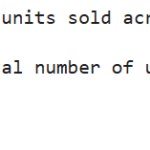Nearly 70% of American workers say they’re unlikely to save enough to meet their retirement needs. And that’s only part of the bleak outlook gleaned from the 6,135 responses to a survey released earlier this month by the Transamerica Center for Retirement Studies (TCRS).
Most respondents expressed concerns about achieving the same financial security as their parents’ generation and fears that Social Security will not cover their needs when they’re done working. More than half (56%) say they’re still recovering financially from the impacts of the COVID-19 pandemic, while nearly half (43%) worry that artificial intelligence and robotics will replace them before they retire.
“Today’s workers are stuck between a rock and a hard place,” Catherine Collinson, CEO and president of TCRS, said in a statement. “They are traversing disruptions in the economy, a tenuous employment market, and the high cost of everyday living — while being expected to self-fund a greater portion of their retirement income compared with prior generations. Many are struggling to save adequately.”
TCRS conducted its 25th Annual Retirement Survey through a sample of traditional W2 employees, self-employed workers and those who are unemployed but looking for work.
The nonprofit urges employers and policymakers to use the survey data as “call to action” as the U.S. population grows older and many risk outliving their savings. This includes efforts to bolster Social Security and Medicare programs, expansion of workplace-based savings options and the promotion of financial literacy.
“Employed workers are generally better positioned to prepare for retirement. They enjoy a steady income, and many are offered employer-sponsored retirement plans that make it easier to save and invest,” Collinson said.
“At the same time, employed workers are financially stretched with competing priorities and they are vulnerable to job loss and other financial shocks. These factors put them at risk of falling short.”
Transamerica found that 52% of W2 employees are expecting self-funded savings vehicles — such as 401(k)s, 403(b)s and individual retirement accounts (IRAs) — to serve as their primary income source in retirement. But only 28% of this group “strongly agree” they’re building an amount that’s large enough.
These savings levels are also being slashed earlier in life. Transamerica reported that 37% of W2 workers have tapped into their retirement accounts, including 31% who’ve taken out a loan and 21% who’ve made early withdrawals due to hardships.
Self-employed workers report similar trends but have unique distinctions.
Only 33% of this group expects to primarily self-fund their retirement. Another 32% plan to use income from business ownership or continued work, while 20% say Social Security will be their primary income source.
Six in 10 self-employed workers say they’re saving for retirement, with an estimated median savings of $87,000. Three-quarters of this group have tax-advantaged retirement accounts.
“Retirement may be less relevant to self-employed workers — especially if they enjoy their work,” Collinson said. “While it may be tempting for them to procrastinate or forego retirement planning altogether, planning to not retire is not a retirement strategy. Life’s unforeseen circumstances can easily derail their aspirations.”






